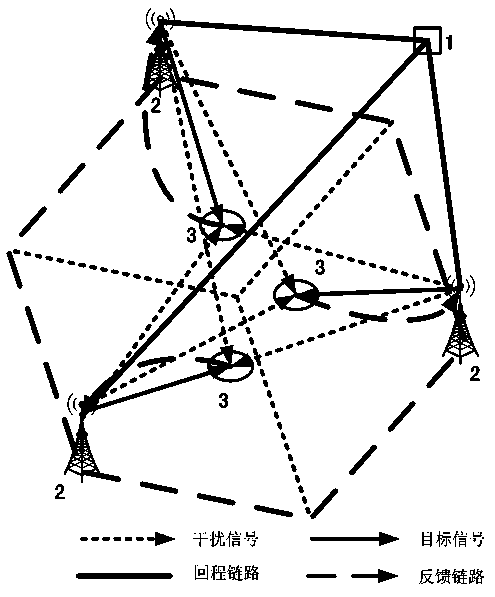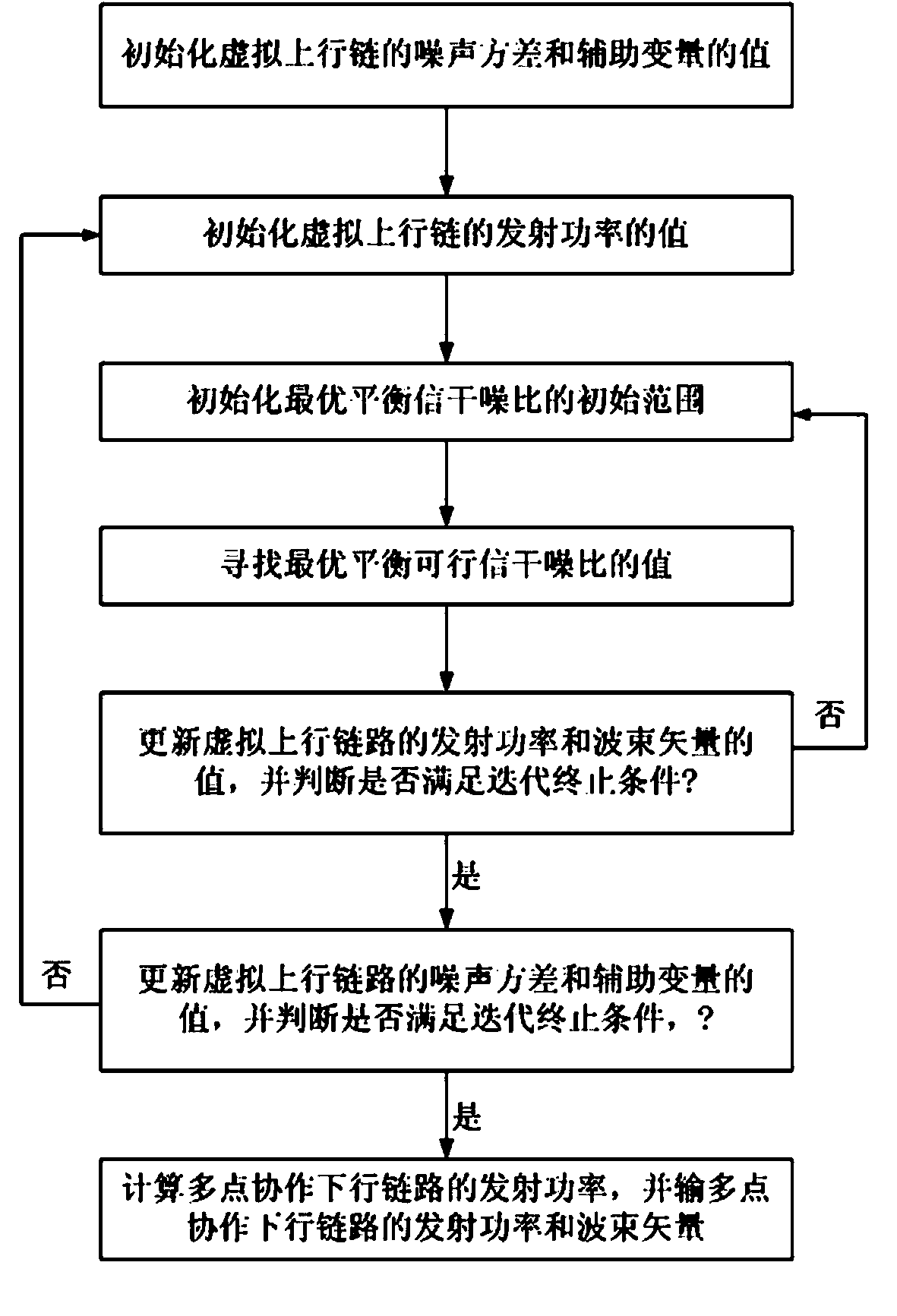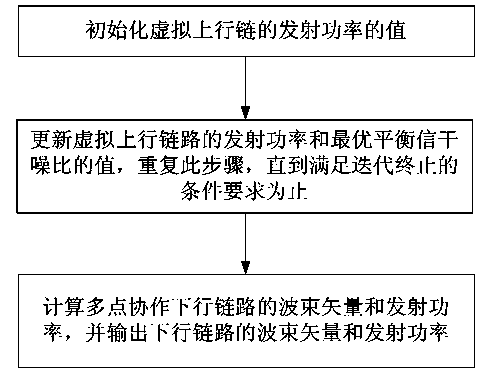Multipoint coordinated beam forming and power allocation method for single base station power constraint
A coordinated multi-point, power-constrained technology, applied in power management, space transmit diversity, diversity/multi-antenna systems, etc.
- Summary
- Abstract
- Description
- Claims
- Application Information
AI Technical Summary
Problems solved by technology
Method used
Image
Examples
Embodiment Construction
[0071] A single base station power-constrained coordinated multi-point beamforming and power allocation method of the present invention includes the following steps:
[0072] 1) Define the noise variance of the virtual uplink initial assignment of ε is an arbitrarily small positive number; an auxiliary variable t that defines the virtual uplink (n) The initial assignment t of (0) = 0;
[0073] i is the base station number;
[0074] for is the noise variance of the virtual uplink base station i;
[0075] K is the number of cooperative base stations;
[0076] n is the number of iterations of the noise variance of the virtual uplink, and the initial value is 0;
[0077] 2). The number of iterations m of the transmit power of the virtual uplink is reset to zero, and the transmit power of the virtual uplink is initialized Get the initial assignment of the transmit power
[0078] for is the transmit power of virtual uplink user k;
[0079] k is the user num...
PUM
 Login to View More
Login to View More Abstract
Description
Claims
Application Information
 Login to View More
Login to View More - Generate Ideas
- Intellectual Property
- Life Sciences
- Materials
- Tech Scout
- Unparalleled Data Quality
- Higher Quality Content
- 60% Fewer Hallucinations
Browse by: Latest US Patents, China's latest patents, Technical Efficacy Thesaurus, Application Domain, Technology Topic, Popular Technical Reports.
© 2025 PatSnap. All rights reserved.Legal|Privacy policy|Modern Slavery Act Transparency Statement|Sitemap|About US| Contact US: help@patsnap.com



